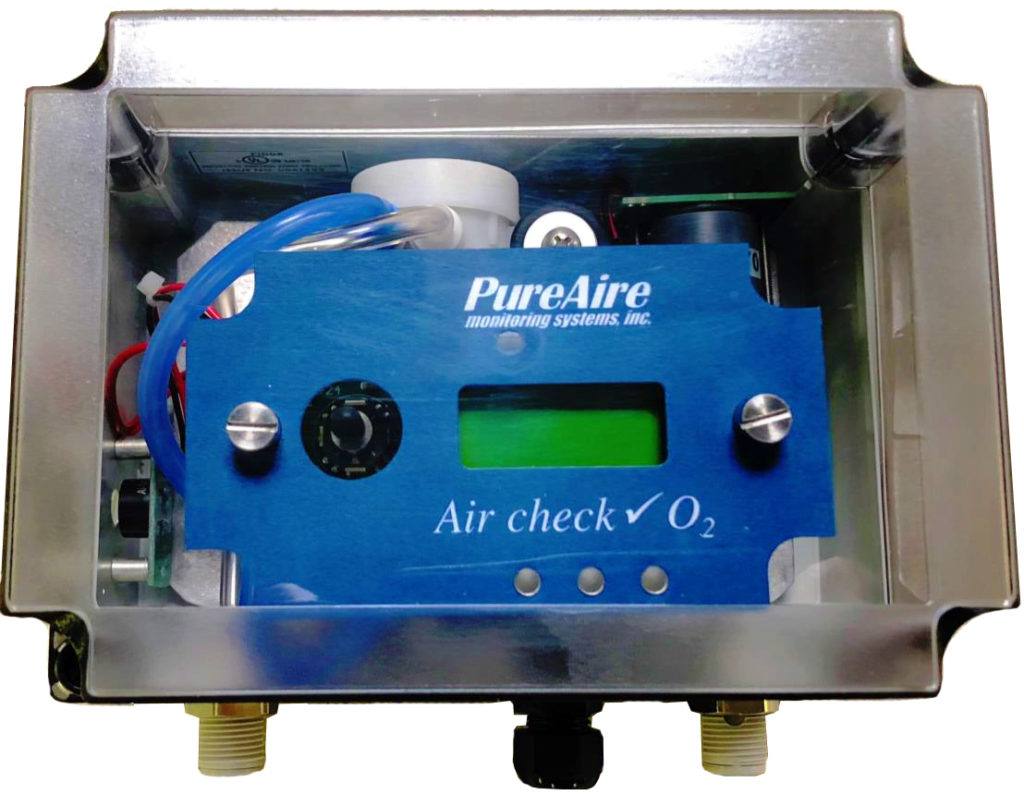The Benefits of Nitrogen and Carbon Dioxide for Food Processing
- By : PureAire Monitoring Systems
- Posted on : November 22, 2018
- News Room
A blend of gases — carbon dioxide, oxygen, and nitrogen — help preserve packaged food by reducing the amount of oxygen inside the sealed package. Gas flushing or Modified Atmosphere Packaging, as the process is called, also reduces the amount of processing that food must undergo. This preserves the quality and nutrient content of meats, vegetables, and other foods.
Estimates suggest that 25-40 percent of fresh food does not reach consumers due to spoilage in transit. Modified Atmosphere Packaging enables fresh food to stay fresh by slowing down the food spoilage process, reduces food waste, and allows consumers to store purchased foods for longer.
Without Modified Atmosphere Packaging, oxygen levels inside food packages would be 20.9 percent. By introducing nitrogen into the package, facilities strive to lower oxygen levels, sometimes as far as zero. With no oxygen inside the package, bacteria will be unable to grow and the food will not oxidize. Carbon dioxide also inhibits bacteria growth and lowers the pH of preserved food. Carbon monoxide is often used in meat packaging, as it can preserve the red color. Packing plants use either low-barrier, breathable film that allows fruits and vegetables to breathe, or high-barrier film that prevents gas inside packaged meat, fish, or cheese from seeping out.
As oxygen is flushed out of the package, the blend of nitrogen and carbon dioxide or carbon monoxide is piped in and the package is sealed, trapping the inert gases inside.
While the process of Modified Atmosphere Packaging revolutionized food packing, it isn’t without risk. Nitrogen gas, a critical component of the gas flushing blend, has the potential to create an oxygen deficient environment if a leak occurs. As nitrogen leaks, it physically displaces oxygen, often in a matter of minutes. As employees breathe air that does not have enough oxygen, they may become tired and confused or experience difficulty breathing. Within minutes, employees could die from asphyxiation as a result of breathing oxygen-deficient air.
Since nitrogen gas has no color or odor, secondary measures must be used to detect a leak before staff experience life-threatening symptoms. One simple and cost-effective way to monitor the food packing facility for leaks is by using an oxygen monitor.
How an Oxygen Monitor Protects Workers in Food Packing Plants
While it’s critical to maintain the right blend of gas in packaged foods, it’s also important to ensure that gas used in food packing equipment does not leak out of the machines. Gases used in food packing, including nitrogen, are colorless and odorless, so staff would be unable to detect a leak visually. By installing an oxygen monitor in the food packing facility, employers can detect leaks before workers’ health is adversely affected.
Since nitrogen gas depletes oxygen, it’s easy to tell whether nitrogen is leaking by taking continual measures of oxygen. The secure, wall-mounted oxygen monitor checks the levels of oxygen in the room and remains silent as long as oxygen is above the minimum amount.
The oxygen monitor will sound an alarm if oxygen falls to 19.5% or 18.0%. The 90 db alarm is designed to be heard over the sound of the equipment, and there’s also a flashing light to warn employees of a drop in oxygen levels. Employees can then leave the room before the oxygen falls below the acceptable threshold and staff begin to experience health problems.
In addition to using oxygen monitors on the food packing line, facilities should also use oxygen monitors wherever inert gases are stored. Oxygen deficiency monitors from PureAire are designed to last for a minimum of 10 years with no maintenance or annual calibration. The monitors feature a digital display that’s easy to read, and do not drift as a result of barometric pressure. If you’re looking for an oxygen monitor that’s low maintenance, accurate, and easy to use, consider PureAire. Visit www.pureairemonitoring.com to learn more.




